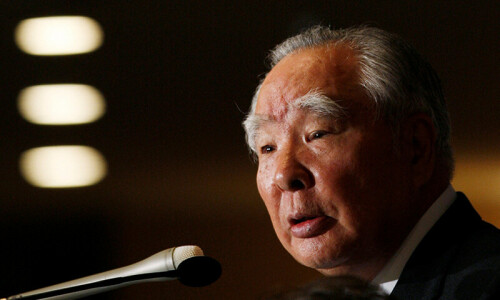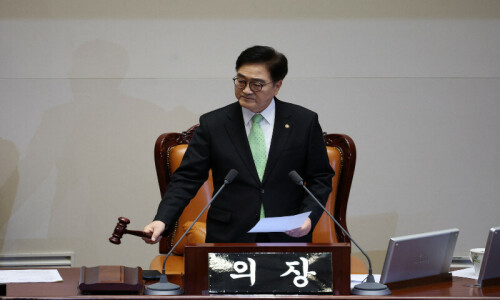As many as 35 percent of female medical doctors are unemployed in Pakistan, even though the world’s fifth most populous nation is in dire need of skilled medical professionals, according to a report by Gallup Pakistan and PRIDE.
The study, utilising data from the Pakistan Bureau of Statistics and specifically concentrating on female medical graduates, conducted an analysis of the Labour Force Survey for the year 2020-21.
Is it concerning? Yes. Is it surprising? No.
When I recently went into surgery at a reputed local hospital in Karachi, the Operating Room had two men and six women on duty, for a surgery that required immediate and urgent attention. It not only shows the competency level of females, but also women’s greater ability to cope, both mentally and emotionally, with the stress of the surgical wing. But do the study’s numbers lie? No.
Many of the female doctors I know in my own family have been unable to pursue the field due to various reasons. Having spoken to them to know the underlying reasons, I came to know that, besides the usual job market and economic dynamics, the problem really begins at home.
A large number of female doctors are not practising medicine, even though Pakistan desperately needs their services. What can be done to bring them into the workforce?
Firstly, societal norms and cultural barriers often limit women’s mobility and employment opportunities, rendering it difficult for them to pursue careers in certain regions or specialties. This gender bias can discourage many female doctors from actively seeking employment.
Secondly, the healthcare sector in Pakistan faces infrastructure and resource constraints, leading to fewer job opportunities. The healthcare system’s capacity to absorb new graduates is limited, exacerbating unemployment issues.
Discrimination and bias within the healthcare industry itself also play a role. Female doctors may face unequal treatment or be overlooked for promotions and job opportunities, contributing to their higher unemployment rates.
Lastly, and most importantly, the lack of affordable childcare and family support systems can make it challenging for female doctors to balance their professional and personal lives, leading some to delay or forgo their careers altogether.
The ‘doctor-bahu’ [doctor-daughter-in-law] syndrome — wherein doctor brides are sought after only as a status symbol and medical education is obtained only to enhance marriage prospects — coupled with the demand for wives to become roti-making machines at home continues to riddle society.

As of 2022, the fee for studying one year at an average private teaching hospital was nearly Rs 1.7m. Do the maths for the four or five years required to obtain a degree. This is what the girl’s parents invest in her medical education — not counting the investment by and opportunity cost to the state — only for this investment to go down the drain when she gives up her career after marriage.
Addressing these multifaceted issues: gender bias, healthcare infrastructure, workplace discrimination, and family support, is crucial to reducing the unemployment rate among female medical doctors in Pakistan.
Firstly, implementing targeted affirmative action policies to promote gender equality within the healthcare sector is vital. Introducing legislation that mandates equal opportunities for women in medical institutions is important. This includes providing incentives or grants for medical institutions to hire and retain female doctors, offering equal opportunities for career advancement, and eliminating gender-based discrimination to meet diversity targets.
Establishing mentorship programmes and professional development opportunities, specifically designed to help female doctors advance in their careers, will also encourage women in continuing their medical trajectory.
Investing in the expansion and improvement of healthcare infrastructure will also create more job opportunities for female doctors. Building and equipping healthcare facilities can help absorb the surplus of medical professionals. Simultaneously, it also bolsters the nation’s healthcare system.
Collaborating with private sector organisations and investors to fund and develop healthcare infrastructure projects can accelerate the process and ensure sustainable development. Investing in the training, education and development of female doctors, particularly in areas where they are most needed, will ensure that, as healthcare facilities expand, there is a skilled workforce to fill the positions.
Offering flexible work arrangements and childcare support for female doctors will enable them to balance their professional and personal lives effectively. Creating a supportive environment where women can pursue their careers while fulfilling family responsibilities is essential.
Do we have daycare facilities in hospitals, or anywhere in the corporate sector of Pakistan, barring a few that I can count on my fingers? While we do have private daycare centres, the commute to and from the workplace is a task in itself, considering traffic, petrol prices and distance, apart from the school pick-and-drop. It is not sustainable to leave one’s workplace that many times.
Addressing the unemployment of female doctors is not only a matter of healthcare access and gender equality. It has a direct impact on overall societal wellbeing. By actively working towards this, Pakistan can harness women’s potential to address its primary challenges and promote a healthier society with a liveable future.
The writer is a content lead at an agency. She can be reached at sara.amj@hotmail.co.uk
Published in Dawn, EOS, September 24th, 2023
















































Dear visitor, the comments section is undergoing an overhaul and will return soon.